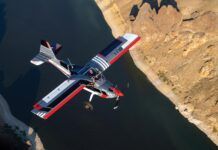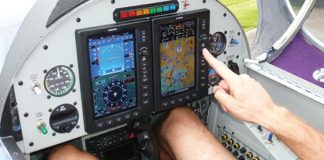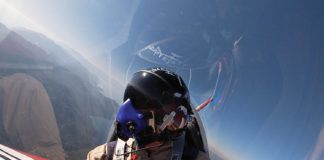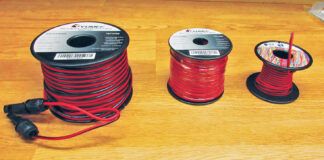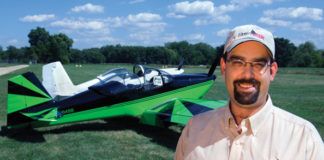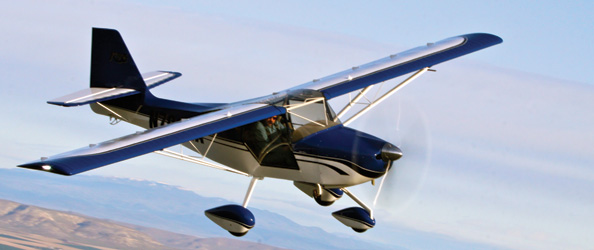
It came out in the early 1980s—a kit airplane that combined the aluminum-tube ladder wing structure and two-stroke engines of the ultralight world with a conventional closed-cabin design. The Avid Flyer’s large-diameter tricycle-gear wheels made it look like a tyke’s pull-toy from the Lindbergh era, but the 500-pound folding-wing airplane struck a chord among the homebuilding public. So much of a chord, in fact, that numerous clones/copies soon hit the market, with the Denney Kitfox at the fore. The Kitfox’s similarity to the Avid Flyer and Dan Denney’s prior dealings with Avid designer Dean Wilson set the stage for one of the most tightly fought battles of the homebuilt industry. It peaked (but didn’t end) in an Idaho courtroom.
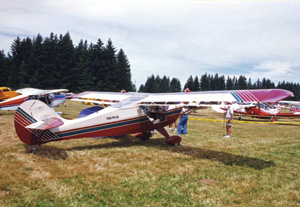
Both sides sold a lot of airplanes. While the design philosophies diverged over the years, the basic Kitfox and Avid Flyer designs remained fairly close—which gives us a great opportunity to compare the accident causes and rates between two similar aircraft from different companies.
Model Notes
Like all homebuilts, the designs of the basic Avid Flyer and Kitfox evolved over time—in some ways dramatically so. Fifteen of the 97 Kitfox accidents don’t include any further model designator. Models from “Kitfox 1” to “Kitfox 7” are included, plus the Kitfox Light, Kitfox Outback, Kitfox Speedster, etc.
While there isn’t as much variation in the Avid ranks, the individual models differ more. The 60 Avid accidents include not only variations of the basic Flyer, but the big-engine Magnum and the boat-hull Amphibians and Catalinas as well.
Unfortunately, it’s impossible to know how many of the airplanes listed merely as “Avid Flyer” are Mark IVs versus earlier models, or how many of the “Kitfox” accidents are Kitfox 2, Kitfox 3, or even Kitfox 7. For this analysis, we’ll lump the two basic brands together, and occasionally look at those areas where differences may arise.
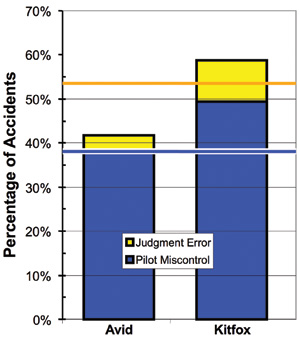
Figure 1: Avid and Kitfox Pilot Error Accident Rate.
Pilot Error
One of the interesting differences is in the Pilot Error arena: As Figure 1 shows, the Avids have a total Pilot Error rate about 30% lower than the Kitfoxes. The Kitfoxes have a higher rate of “Pilot Miscontrol” accidents (those related to physical control of the aircraft) and a higher rate of “Judgment Error” accidents as well.
The Judgment Error difference is primarily in the “Maneuvering at Low Altitude” category. The Kitfoxes had six instances, the Avids, none. There is no reason Kitfox owners would have a higher tendency of involvement than Avid owners.
Looking through the data, there isn’t really a standout reason for the Kitfox’s higher rate of Pilot Miscontrol. Pilot total time and time in type are nearly identical for both product lines. Both types see the same proportion of accidents occurring in the different flight modes (takeoff, cruise, landing, etc.). A higher proportion of Avid Pilot Miscontrol accidents are attributed to problems with wind (over twice the percentage of the overall fleet, in fact), but its rate of occurrence of Pilot Miscontrol accidents is less.
The one clue is in airspeed control. About 7% of Kitfox accidents occur when the pilot mismanages airspeed versus about 3% for the Avids. The Kitfox figure is slightly above that of homebuilts overall. The NTSB “Probable Cause” mentioned stall or loss of airspeed control in about 25% of Kitfox accidents versus about 16% for the Avids. (This would include loss of airspeed control during an emergency landing, which is counted differently in my database.) There’s not much to hang this difference on.
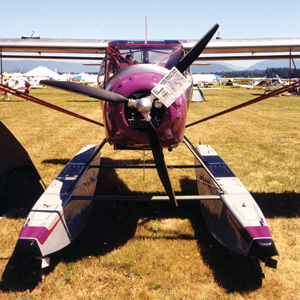
The strange thing is, when only the two-stroke-powered Avids and Kitfoxes are compared, the percentage of accidents associated with stalls is about the same. The difference in stall statistics is confined to the Avid and Kitfox versions with four-stroke Rotax 912s, Lycomings and Continentals.
It’s interesting to note that most of the big-engine Avid accidents involved Avid Magnums, while the big-engine Kitfoxes were spread across multiple models. The Magnum had longer wings than the stock Avid Flyers, so one wonders if the extra wing area gave the pilots a slightly higher margin against accidental stalls compared to the “up-engine” stock Kitfoxes.
Other Accident Causes
Figure 2 shows the relative occurrence rate of accidents not involving Pilot Miscontrol. Avid stands out in the “Engine Mechanical” category, with a rate almost three times higher than the Kitfox.
When I first noticed this several years ago, I was puzzled. The aircraft are of similar configuration, running the same kinds of engines, and operated the same way. Why would the Avid have a higher rate of engine failure?
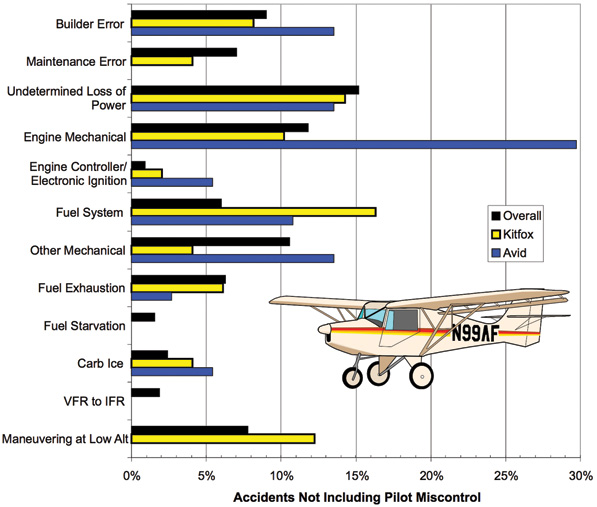
Figure 2: Accident Cause.
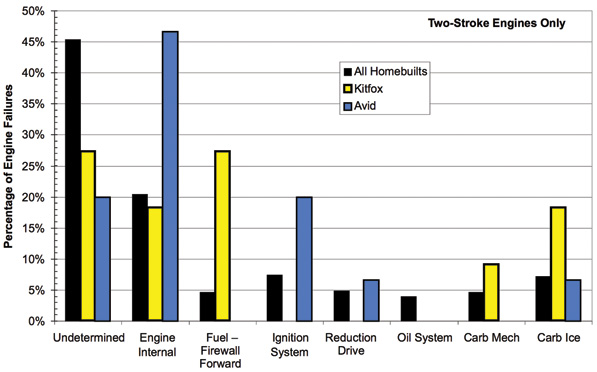
Engine Failures for Two-Stroke Engines Only. Comparing the causes of two-stroke engine failures, Avid Flyers experience more internal problems, but Kitfoxes tend to have more problems with fuel delivery on the firewall side of the aircraft.
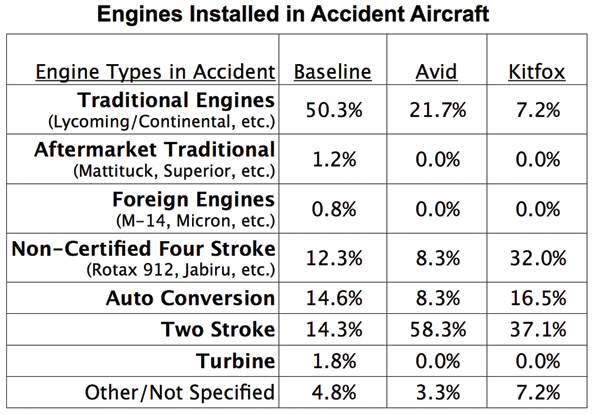
Engines Used. This chart shows the relative percentage of engine types in aircraft that are involved in accidents. It does not reflect the installed percentage of each type of engine.
I mentioned this phenomenon the last time I discussed the overall homebuilt accident statistics in KITPLANES (October 2008). John Hyde, a California Kitfox owner, wrote in to the magazine and noted one important difference between the Avid Flyer and the Kitfox: The Avid mounts the two-stroke engines inverted, while the Kitfox’s engine is mounted upright.
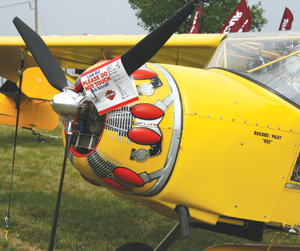
This may well be the reason for the difference in failure rates, which is dramatic when only the two-stroke-powered versions are compared. There were about the same number of accidents involving two-stroke-powered aircraft during the 10-year period (32 Avids/36 Kitfoxes). Only two of the two-stroke Kitfox accidents were attributed to engine mechanical failure, compared to nine Avid Flyers.
On the other hand, both designs use the same mounting strategies when four-stroke engines are installed, and the difference in the engine mechanical failure accident rates disappears.
Why the difference in installation? The Avid’s inverted mount produces a high thrust line like that of a traditional engine, making the airplane look more “normal.” The Kitfox was originally designed around a small radial engine. When the radial fell through, the customers clamored to keep the classic “bump-cowl” appearance that was to have gone with the new engine. So a Rotax engine was mounted upright to put the thrust line closer to the center of the cowl. In other words, it looks like the Kitfox ended up with a lower rate of engine failure due to a marketing decision. And you wonder why aircraft designers get gray hairs?
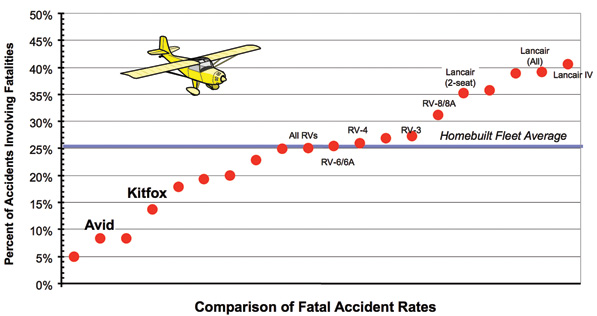
Figure 3: Fatal Accident Rate Comparison. Light, low-energy airplanes usually have a lower ratio of fatal accidents.
Fatal Accidents
No gray hairs for the designers, as far as the Avid and Kitfox fatality rates go. As Figure 3 shows, the ratios of fatal accidents versus total accidents are well below the average for both aircraft types. These are low-speed airplanes, and that results in generally lower crash forces. The airplanes’ steel-tube construction likely does a good job of protecting the occupants. Further, both types are considered a kind of “everyman” airplane, and the overall accident rates, shown in Figure 4, bear that out. Both of these types fall right around the average for homebuilts.
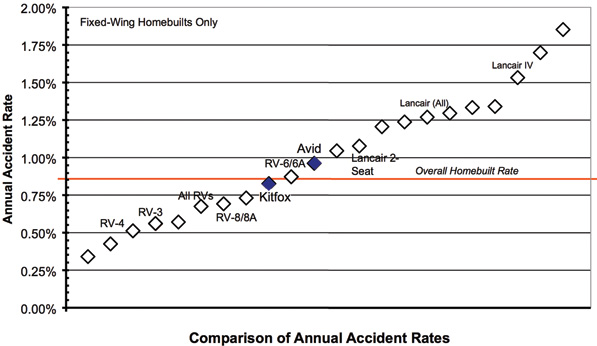
Figure 4: Overall Accident Rate Comparison. Avids and Kitfoxes are about average with respect to the percentage of the total fleet that crashes each year.
Wrap-Up
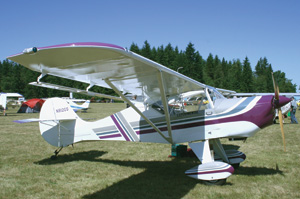
The Avid/Kitfox rivalry had its bitter aspects over the years, but the competition triggered a lot of innovation in both Idaho-based companies. The judge in the lawsuit eventually declared that the dispute should be settled in the marketplace. On that basis, Kitfox can be declared the winner—the FAA registration database for January 2010 shows about 650 Avids registered, but more than 1300 Kitfoxes.
Both principals sold their companies after a time, and went on to other aviation interests. Dean Wilson developed the huge Private Explorer, and Dan Denney went on to the Thunder Mustang. Their former companies ran into trouble after the turn of the century, and both eventually declared bankruptcy. You can’t keep good airplanes down, though. Kitfoxes are currently sold by Kitfox Aircraft LLC in Idaho, while Avid Flyer components are sold through Airdale Sportplane and Supply in Wisconsin. (Note: Dean Wilson’s side of the Avid/Kitfox controversy can be found in the October 2006 issue of KITPLANES.)




